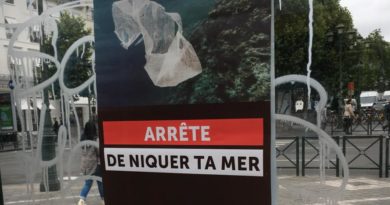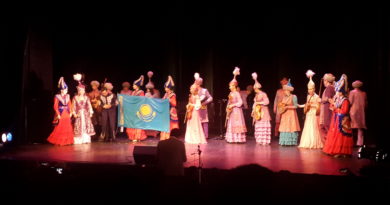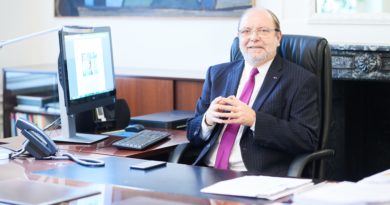Bruxelles Symboliste
René Magritte is perhaps the best well-known Belgian painter. Every year, thousands of people visit Brussels and head down to the museum that houses his ingenious paintings, the cadavres exquis and photographs of people with their eyes closed, large canvases showing the interest he had in the interplay between languages and image. But who were the people who taught him, the mentors who encouraged him as a student? And where did his interest in exploring the world of dreams and symbols, the surreal come from?
“One of René Magritte’s teachers was Constant Montald,” says Marie Hanquart, guide from Arkadia. “Montald belongs, we can say, to the Symbolist movement.”
We stand on the steps outside the Palais de Justice in Brussels, a group of eleven people, about to enter the building and learn about an artistic movement that has often gone unnoticed by many.
“Symbolism is a difficult movement to define or encapsulate,” says Miss Hanquart. “Artists approached it in many different ways. But perhaps one common aspect was that the meaning of the piece of art was not so evident. The key to understanding the artist’s message lay somewhat hidden. It was up to the viewer or reader to make sense of it.”
We pass through the security check and enter the building. At a few minutes past two o’clock, sunlight filters in through a handful of windows high up but the air feels cool and dry; it becomes pleasant to wander into the semi-darkness that falls on us like a veil. The floors are marbled, red and white in different patterns, and as we amble through the long hallways our bodies become insignificant, miniature figures that march in awe of the columns that stand one after the other like guardians.
“These are only the preparatory paintings by symbolist artist Jean Delville,” says Miss Hanquart, as we enter the Cour d’assises or Criminal Court for felonies. “There was a fire in 1944 and the original ones, which were a lot larger, were severely damaged. They had been here since 1914.”
Five paintings depicting scenes of justice being delivered are fixed high on the wall, one next to the other. The torch is a recurrent image, which in Symbolism represented an interest in science, in knowledge. Greek-born poet and essayist Jean Moréas published in 1886 the Symbolist Manifesto in the French newspaper Le Figaro. Miss Hanquart goes on to explain that at the Cinquantenaire Parc, on the outside of the building, one can admire a series of paintings by different artists, some of whom saw themselves as Symbolists. The paintings are made out of small tiles.
“Delville was commissioned to paint a scene of King Albert. But there are also paintings by other symbolist artists like Constant Montald and Emile Fabry.”
After the Palais de Justice, we make our way to the Royal Museum of Fine Arts. In the lobby we stop to take in the details of a large canvas by Constant Montald called, La barque de l’ideal, or the Boat of the Ideal. The first thing that strikes the viewer is the absence of a boat.
“It’s a mystery,” says Miss Hanquart. “But some people believe that the painting used to be larger. A boat was supposed to be drifting on the water somewhere in the lower part of the canvas.”
Constant Montald was director of the Academy of Fine Arts in Brussels and some of his students included René Magritte and Paul Delvaux. Other Academy directors included Jean-Francois Portaels and Xavier Mellery, the latter being himself a student of Portaels and a teacher of the symbolist painter Fernand Khnopff.
For the final part of the tour, we walk down Mont des Arts and toward the Royal Library of Belgium. In a section called Librarium, Miss Hanquart tells us about two of the most important Belgian writers of all time, Emile Verhaeren, and Nobel prize winner, Maurice Maeterlinck, author of Pelléas et Mélisande, an opera for which Claude Debussy composed the music.
Emile Verhaeren was born in Sint Amands and went to boarding school in Ghent. His language of choice for writing was French but Flanders remained a recurrent setting in many of his writings. Later in life he would spend a lot of time in St. Cloud, not far from Paris.
“This meeting never occurred. It’s all imagined,” says Miss Hanquart, showing us a painting by the Belgian artist Theo Van Rysselbergh, called The Lecture. “The study room, however, is real. It’s Emile Verhaeren’s study in St. Cloud.”
In the picture one can see seven characters, all of them French and Belgian friends of Verhaeren and Théo Van Rysselberghe: Félix Le Dantec, Francis Vielé-Griffin, Félix Fénéon, Henri Ghéon, André Gide, Maurice Maeterlinck, and Henri-Edmond Cross.
We then take the lift to the second floor where a painting by Paul Delvaux and his students called, La carte Littéraire de la Belgique, or The Literary Map of Belgium, shows the names of several writers who made Belgium their home up to the first half of the twentieth century. The painting was made for the 1958 World’s Fair.
“Try to visit La Monnaie theater,” says Miss Hanquart, as a final remark for the tour. “There you will see some beautiful paintings by Fabry, who was in turn inspired by Delville’s work.”



